

ENGS 12 Project, spring 2019
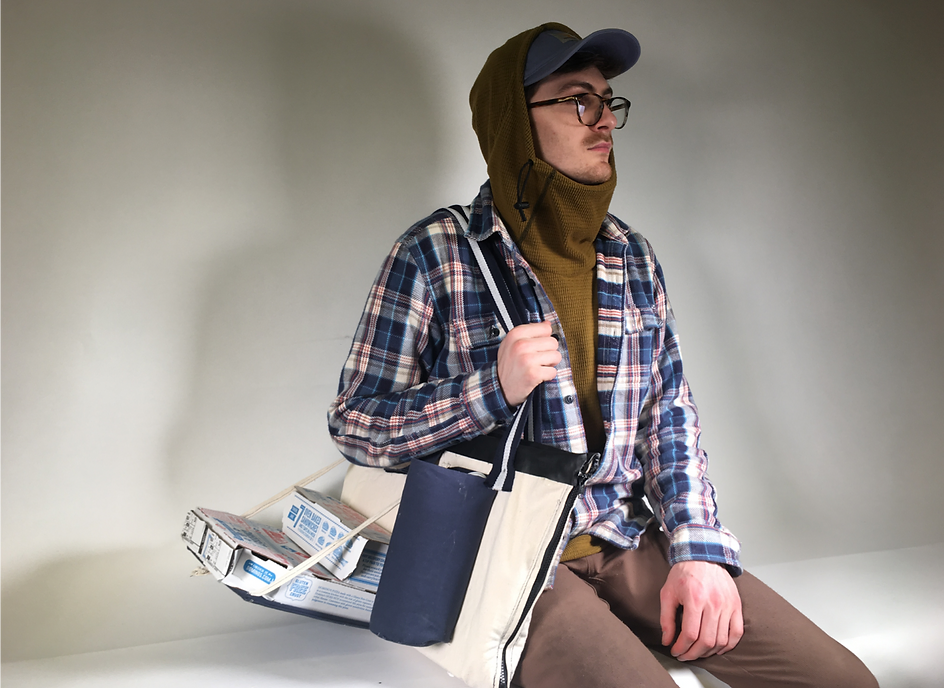
Prompt: What do people carry? Can their methods be improved?
Problem: Traditional bags take too long to load and unload for students and professors in a rush.
Solution: I worked with Ariana and Jasmine to design this over-the-shoulder tote that opens wider than any other bag, and shuts in an instant to get students on the move after a sprawling study session.
Role: Researcher, Designer, Team Lead
Impact: Conducted Ethnographic Observational Research and User Testing to explore new, innovative ways of carrying things. Built rapid prototypes and a more refined to more sturdy second generation.
We started with a few hours of on-campus observation, just taking note of people's carrying habits, to see if we could notice any painpoints. We noticed that even though they had bags, people avoided putting things away, preferring to carry even papers, books, and laptops in overstuffed hands. The food items make sense, but we thought that the the books and papers behavior was strange and deserved a closer look. Why carry bags at all if not to carry your classroom things? So we tried to ask them. But they were too busy to talk. Luckily, we noticed that we did that, too.
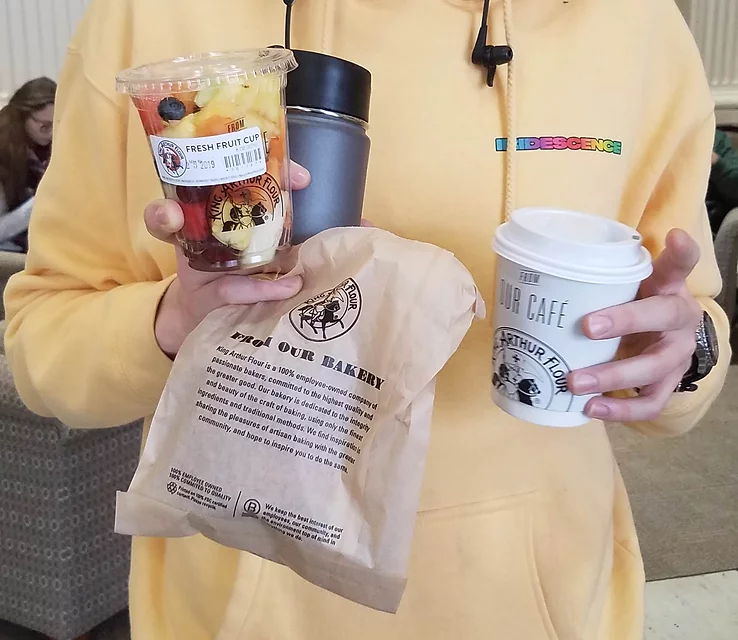
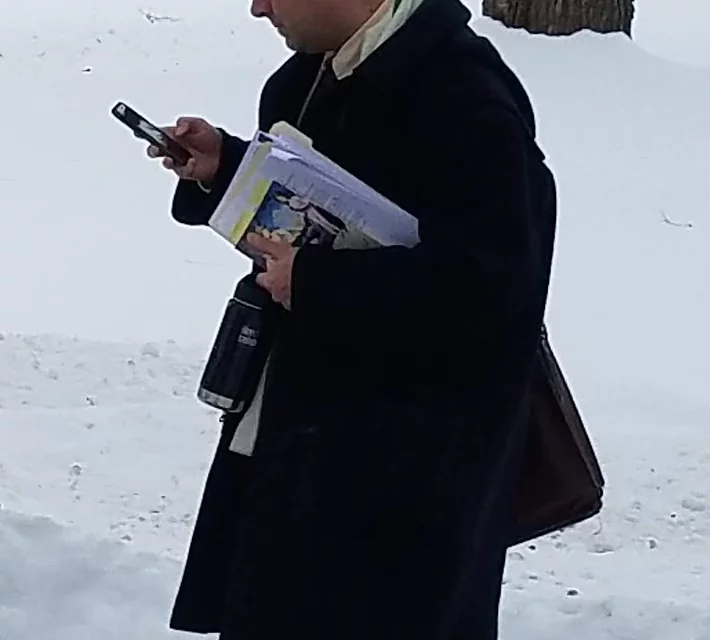
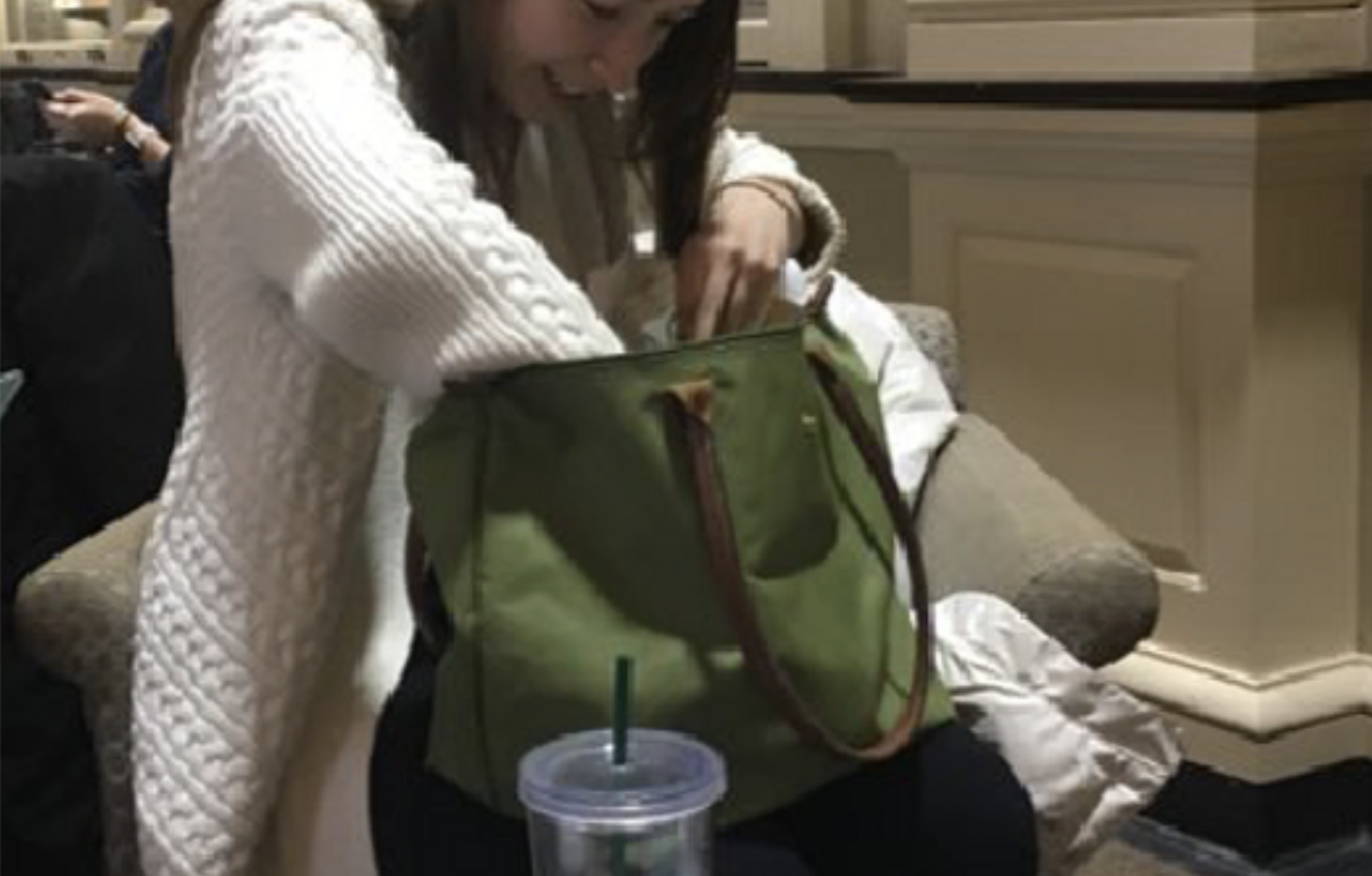
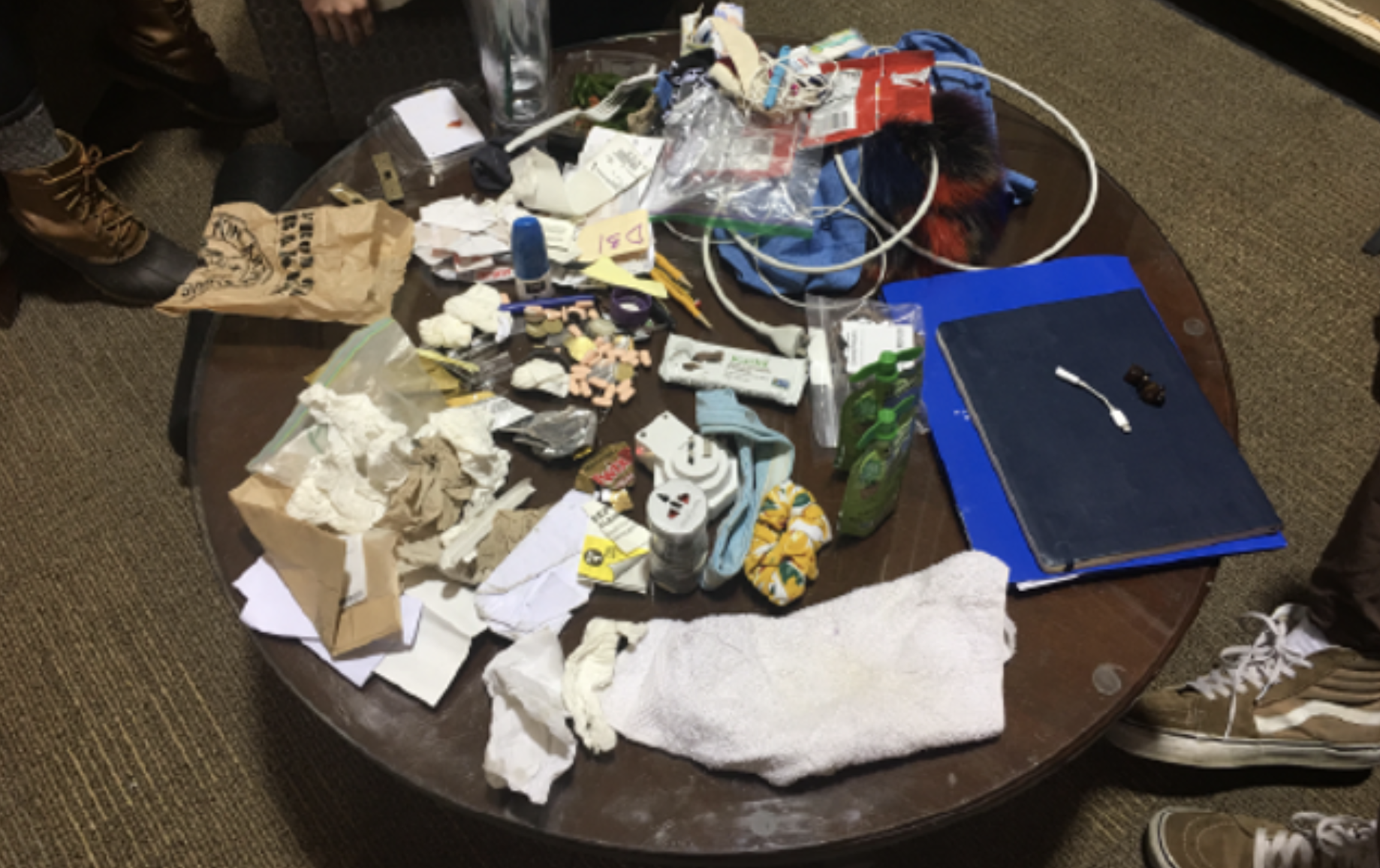
"Ooh here's my dongle! I've been looking for that
"Oh my god, what is going on. This is absurd."
"This is literally from freshman trips (three and a half years earlier). What the hell?"
Using stickynotes and a sizeable whiteboard and we downloaded and organized our observations. We mapped user journeys and our observations to understand what people's behavior looked like, asked where we might intervene to help, and brainstormed what sorts of interventions might be most interesting and effective.
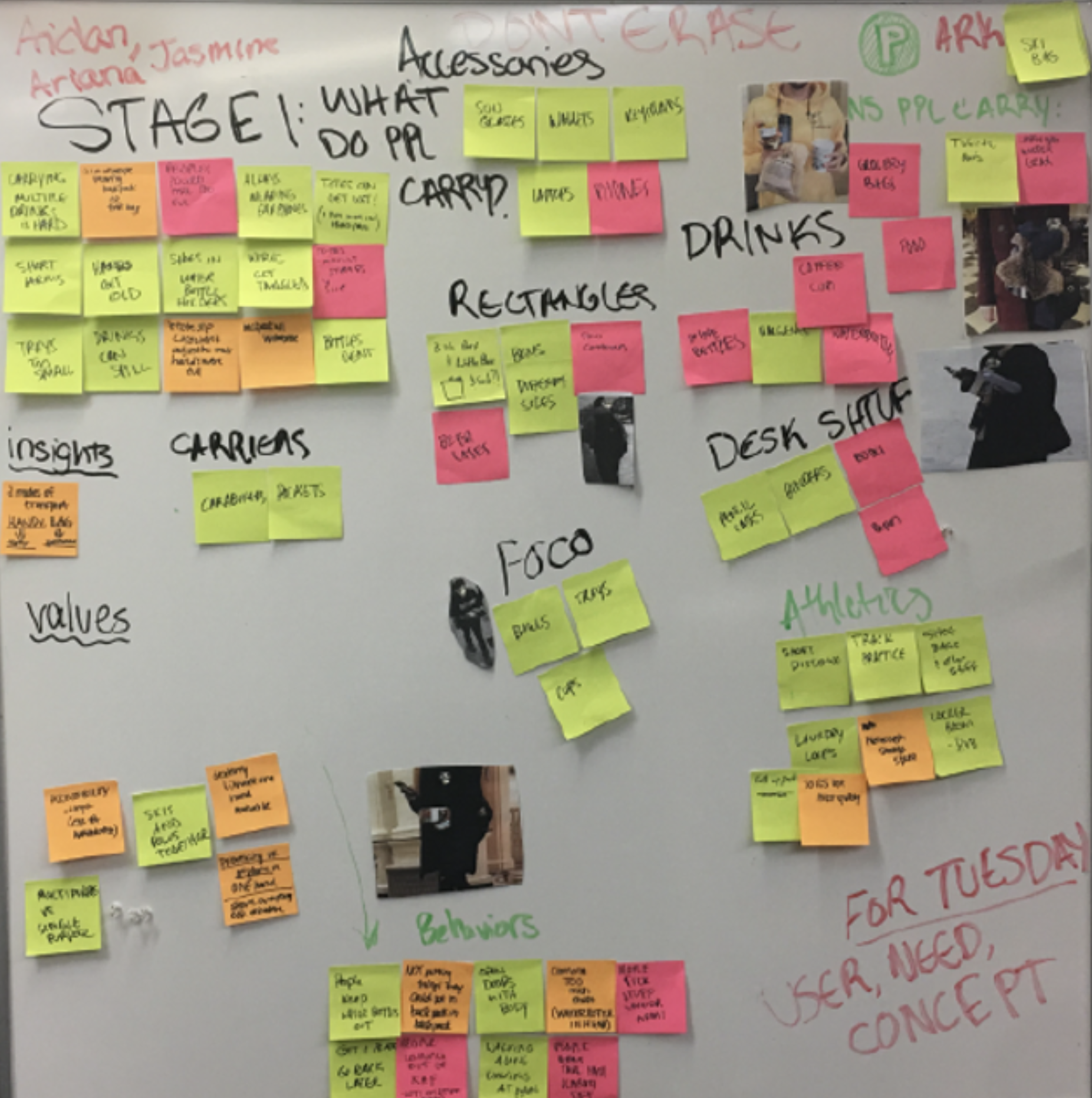
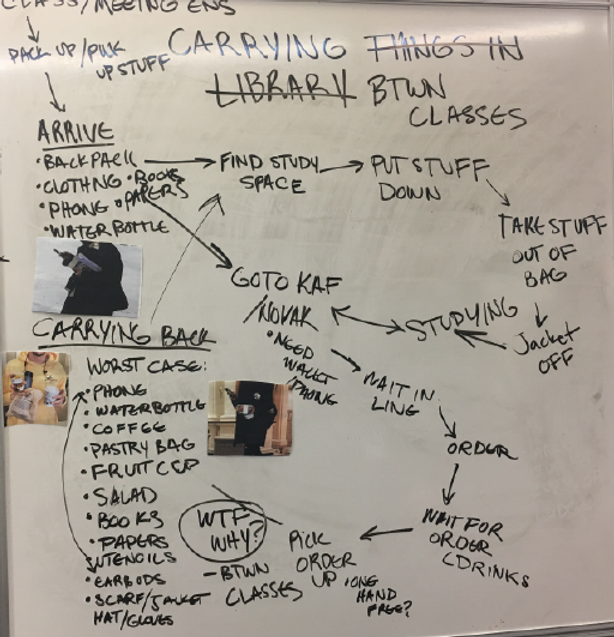
Our assignment was to observe the ways that people carry things, to notice problems, and to come up with some solutions. And we think we did find some problems. From our notes, observations, and interviews, we distilled four key insights. People keep stuff out of their bags, preferring to carry them because:

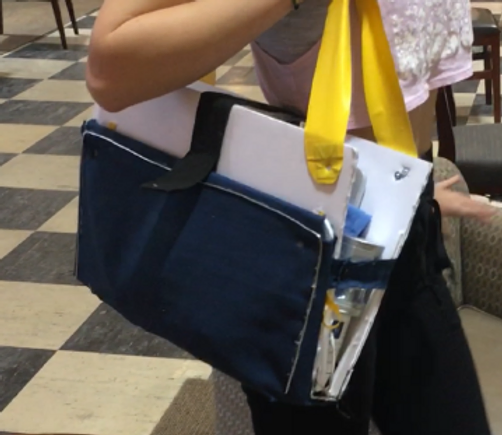
We created our first prototype with stiff walls and a velcro strap so that people could spread and collect their belongings in an instant. The stiff walls also gave us an opportunity to add a new kind of pocket, a semi-taught platform that allows for the horizontal stacking on the exterior of the bag. Further user testing revealed the following areas for improvement:
Improving upon the first, the second prototype has a laser-cut acrylic core to retain structure, with a durable and tasteful canvas shell that quickly zips open and shut (in theory, at least. In practice, the craft-store zipper frequently got stuck). An integrated interior pocket allows for the secure storage of small and sensitive items. An improved folding tray cradles food items or snaps closed to hold bulky items close to the outside of the bag. A large, open bucket pocket gives quick access to anything from gloves to a water-bottle as large as a Nalgene. Given the timeline for the project, this was our final deliverable and demonstrated good observation, rapid prototyping, user testing/research, and outside-of-the-box thinking.
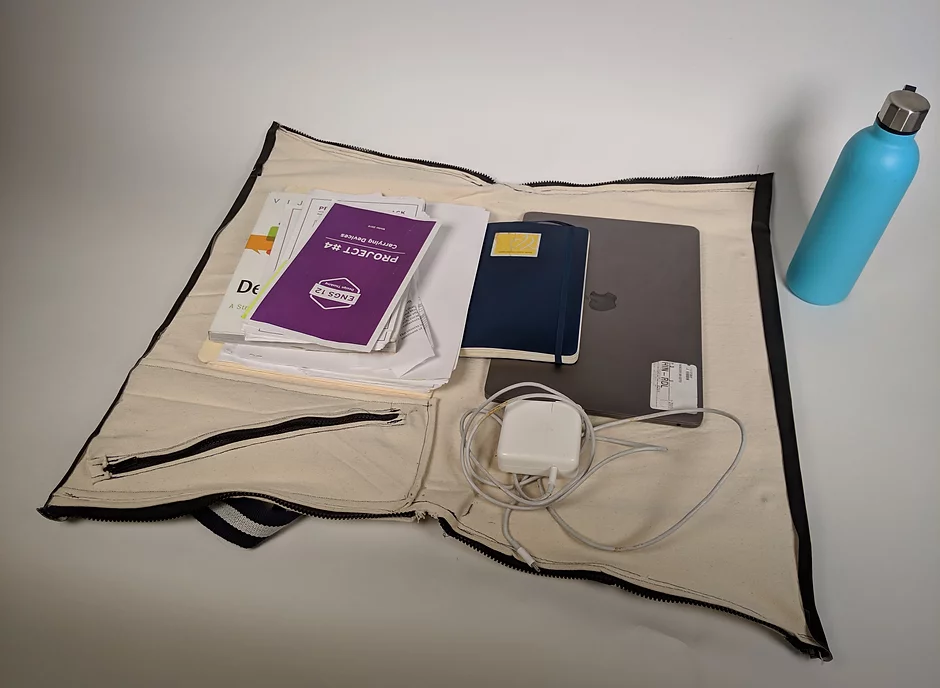
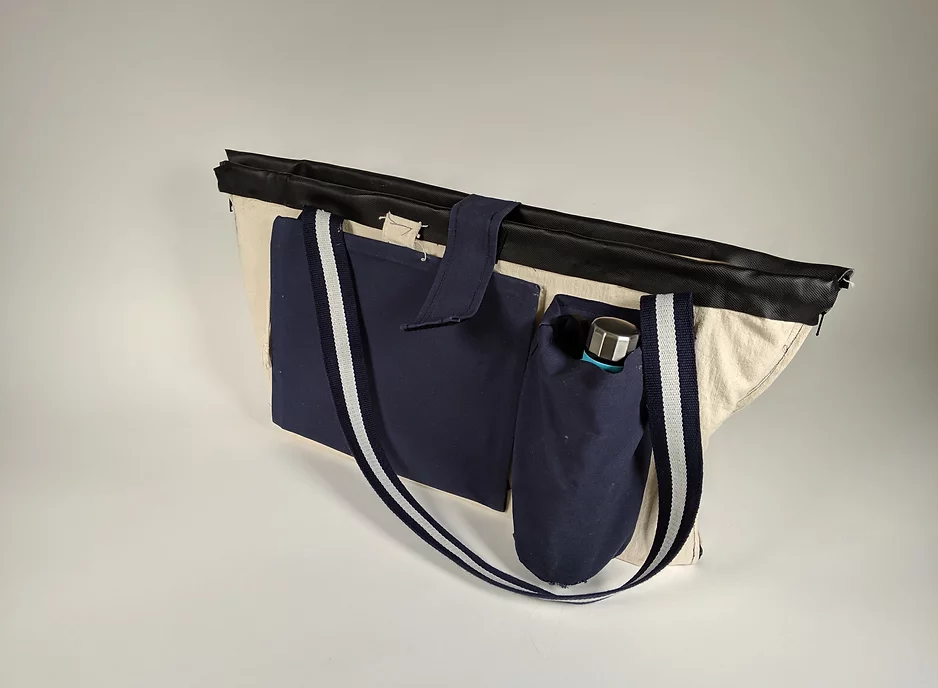
Looking back on this project in 2022, I like the direction we were going, but we ended up making something that was definitely harder to carry than it was worthwhile. The rigid core, while certainly allowing for a "scoop" type action, really lead to a worse carrying experience. The tray, which was a concept that interested us immensely at the time, is also probably more of a strange innovation than a useful solution. The functionality of the design was also held back by the stickiness of the poor-quality zippers we used. Never again! YKK forever! A better design might ditch the rigid sructure and the food tray that needed its support in favor of having a single zipper that runs along 3 sides. This focus on the visibility and accessibility of objects would prevent stuff from getting "Longchamps Lost" and still be easy to load. These proposed changes would reduce weight and cost while increase capacity and ease of use. Maybe I'll make one and send it to my sister at Oberlin for further testing.